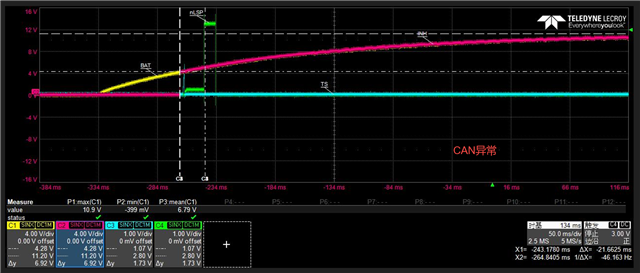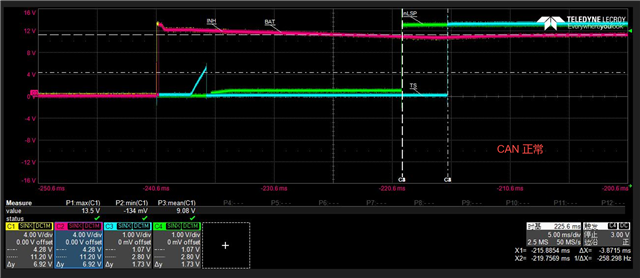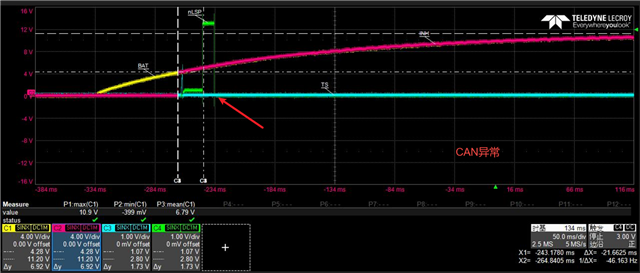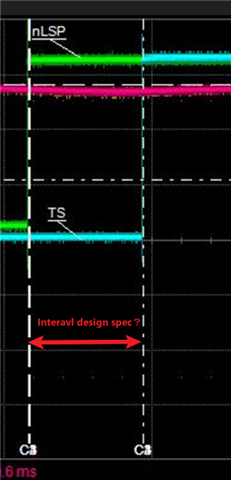Tool/software:
Hi team,
My customer Joyson are using TCAN11625DMTRQ1 for their project. They met an issue that TS pin will not goes high when use low rising slew rate Vsup. Can you please help analysis the cause? Thanks.
SCH: 8780.CAN.pdf
Low slew rate Vsup:

High slew rate Vsup

Best Regards,
Xiaowei Zhang



